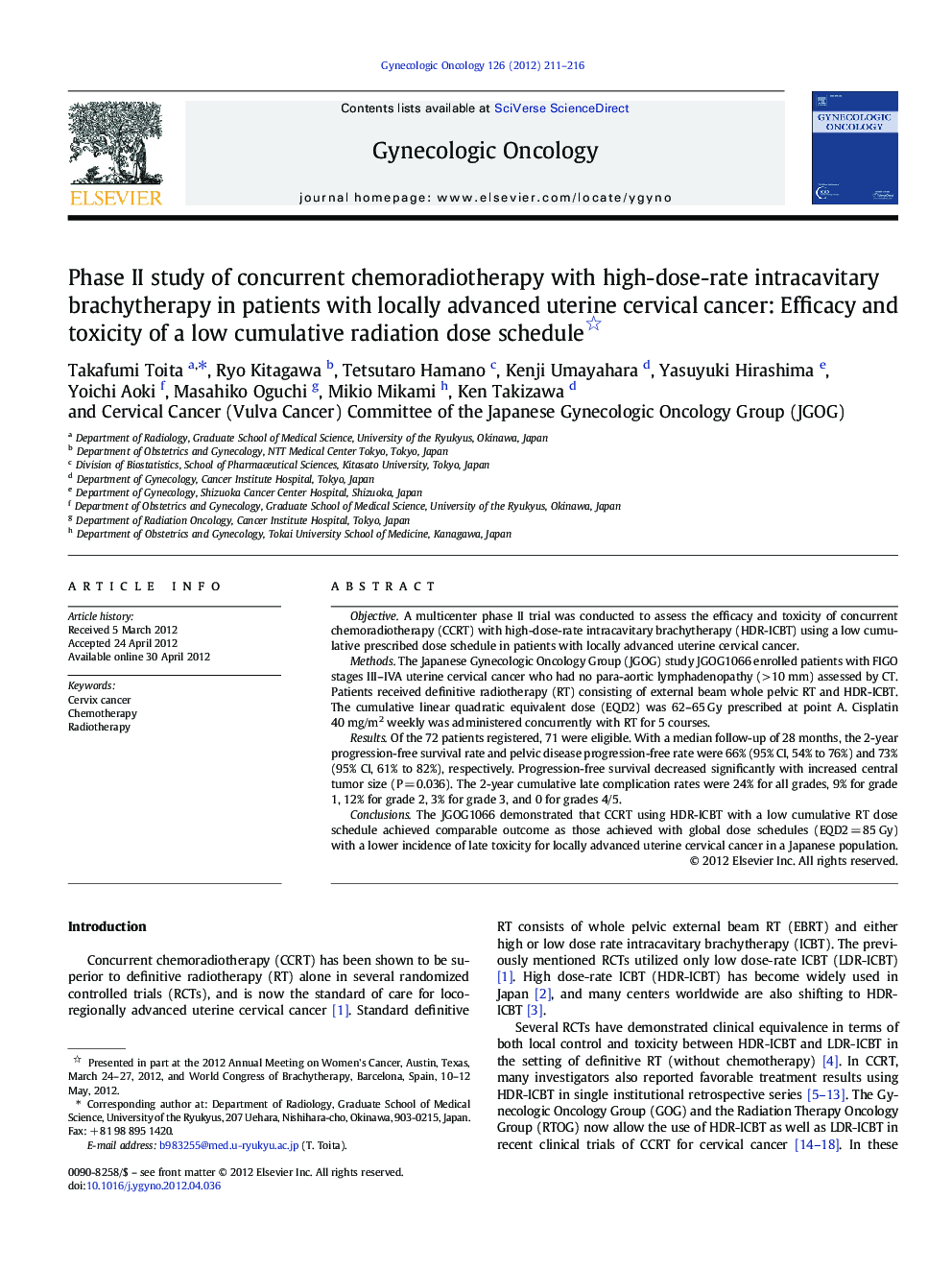| Article ID | Journal | Published Year | Pages | File Type |
|---|---|---|---|---|
| 3946997 | Gynecologic Oncology | 2012 | 6 Pages |
ObjectiveA multicenter phase II trial was conducted to assess the efficacy and toxicity of concurrent chemoradiotherapy (CCRT) with high-dose-rate intracavitary brachytherapy (HDR-ICBT) using a low cumulative prescribed dose schedule in patients with locally advanced uterine cervical cancer.MethodsThe Japanese Gynecologic Oncology Group (JGOG) study JGOG1066 enrolled patients with FIGO stages III–IVA uterine cervical cancer who had no para-aortic lymphadenopathy (> 10 mm) assessed by CT. Patients received definitive radiotherapy (RT) consisting of external beam whole pelvic RT and HDR-ICBT. The cumulative linear quadratic equivalent dose (EQD2) was 62–65 Gy prescribed at point A. Cisplatin 40 mg/m2 weekly was administered concurrently with RT for 5 courses.ResultsOf the 72 patients registered, 71 were eligible. With a median follow-up of 28 months, the 2-year progression-free survival rate and pelvic disease progression-free rate were 66% (95% CI, 54% to 76%) and 73% (95% CI, 61% to 82%), respectively. Progression-free survival decreased significantly with increased central tumor size (P = 0.036). The 2-year cumulative late complication rates were 24% for all grades, 9% for grade 1, 12% for grade 2, 3% for grade 3, and 0 for grades 4/5.ConclusionsThe JGOG1066 demonstrated that CCRT using HDR-ICBT with a low cumulative RT dose schedule achieved comparable outcome as those achieved with global dose schedules (EQD2 = 85 Gy) with a lower incidence of late toxicity for locally advanced uterine cervical cancer in a Japanese population.
► The radiotherapy dose for cervical cancer differs between the US and Japan. ► This is a prospective study of chemoradiotherapy using the dose prescribed in Japan. ► Pelvic disease control and survival rates are similar to those demonstrated in the US trials.
